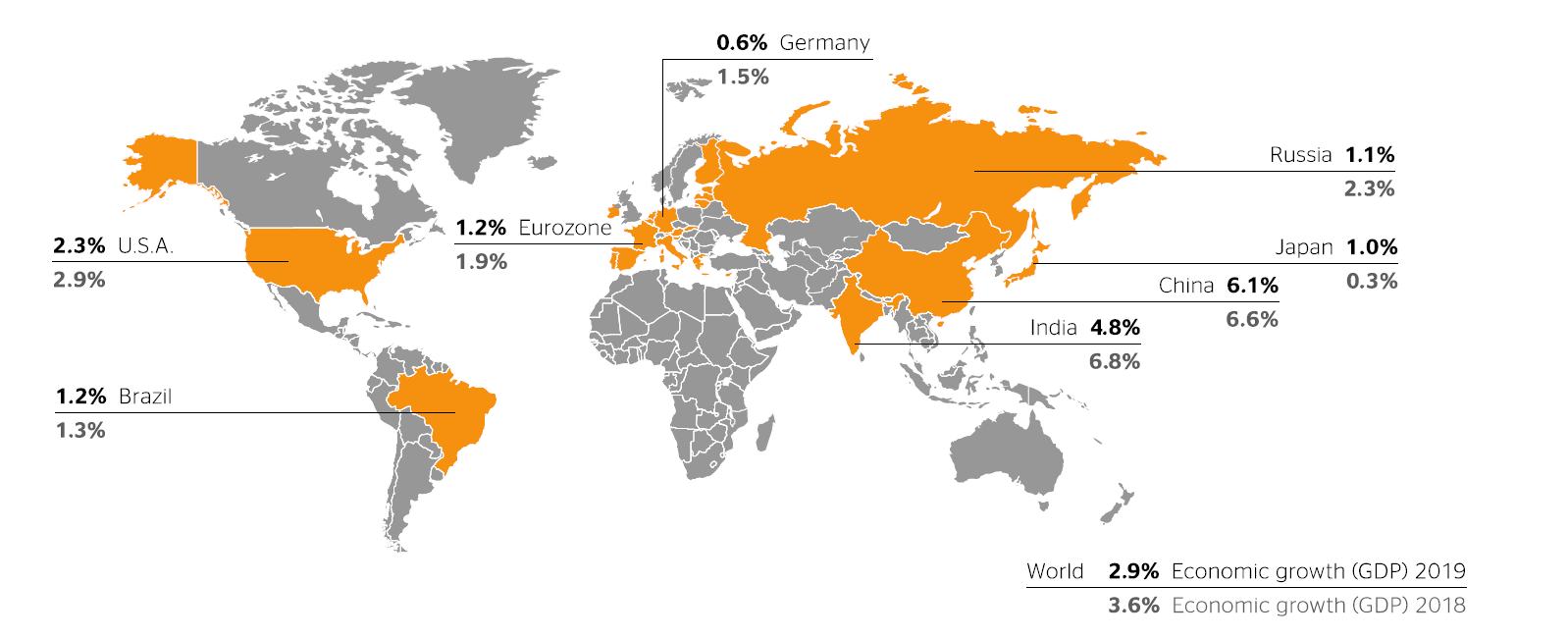Due to the COVID-19 pandemic and the containment measures taken by governments across the world, the global economy shrank by 3.5% in 2020, according to the January 2021 World Economic Outlook Update (WEO Update) published by the International Monetary Fund (IMF). This fell considerably short of the IMF’s original forecast of 3.2% growth from January 2020.
In the eurozone, gross domestic product (GDP) fell by 6.8% in 2020 according to the statistical office Eurostat. Of the major eurozone economies, France, Italy and Spain reported particularly steep declines in GDP of 8% to 11% year-on-year. In Germany, according to the Federal Statistical Office, GDP fell by 5.0% compared to 2019. Countries outside of the eurozone also recorded a decline in economic output in 2020. For the UK and Russia, the IMF estimated a decline in GDP of 10.0% and 3.6%, respectively.
In North America, according to the Bureau of Economic Analysis, the USA suffered a decline in GDP of 3.5% for 2020 as a result of the pandemic. Canada and Mexico were much more heavily affected according to the IMF, with declines in GDP of 5.5% and 8.5%, respectively.
Other countries in the Americas likewise suffered economic losses as a result of the pandemic in 2020. For Brazil, for example, the IMF reported a decline in GDP of 4.5%.
Asian countries also recorded mostly negative growth rates for their economies in the year under review according to the IMF. GDP for the Association of Southeast Asian Nations (ASEAN), for example, fell by 3.7% in 2020. The IMF calculated a noticeable decline in GDP of 5.1% for Japan. India’s economy is estimated to have shrunk by 8.0% according to the IMF. In contrast, China achieved GDP growth of 2.3% according to the IMF. The slump in the economy in the first quarter of 2020 was more than offset here by strong growth in subsequent quarters.






